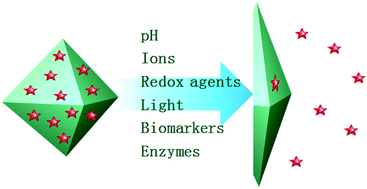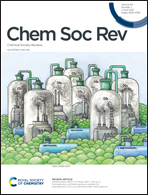Stimuli-responsive metal–organic framework nanoparticles for controlled drug delivery and medical applications
Abstract
Stimuli-responsive metal–organic framework nanoparticles, NMOFs, provide a versatile platform for the controlled release of drugs and biomedical applications. The porous structure of NMOFs, their biocompatibility, low toxicity, and efficient permeability turn the NMOFs into ideal carriers for therapeutic applications. Two general methods to gate the drug-loaded NMOFs and to release the loads were developed: by one method, the loaded NMOFs are coated or surface-modified with stimuli-responsive gates being unlocked in the presence of appropriate chemical (e.g., ions or reducing agents), physical (e.g., light or heat), or biomarker (e.g., miRNA or ATP) triggers. By a second approach, the drug-loaded NMOFs include encoded structural information or co-added agents to induce the structural distortion or stimulate the degradation of the NMOFs. Different chemical triggers such as pH changes, ions, ATP, or redox agents, and physical stimuli such as light or heat are applied to degrade the NMOFs, resulting in the release of the loads. In addition, enzymes, DNAzymes, and disease-specific biomarkers are used to unlock the gated NMOFs. The triggered release of drugs for cancer therapy, anti-blood clotting, and the design of autonomous insulin-delivery systems (“artificial pancreas”) are discussed. Specifically, multi-drug carrier systems and functional NMOFs exhibiting dual and cooperative therapeutic functions are introduced. The future perspectives and applications of stimuli-responsive particles are addressed.



 Please wait while we load your content...
Please wait while we load your content...